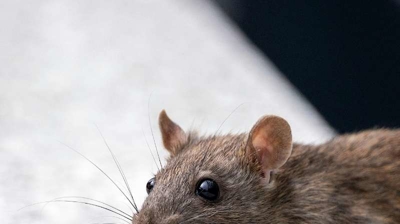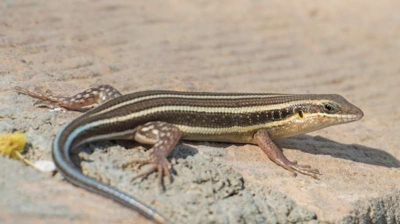
Lone Star Ticks

Are Long Star Ticks Harmful?
Diseases Transmitted
- Ehrlichiosis (Ehrlichia chaffeensis and Ehrlichia ewingii): A flu-like illness that can become serious if untreated.
- Tularemia (Francisella tularensis): A rare but potentially severe bacterial infection.
- Heartland virus: A newly discovered virus causing severe fatigue, fever, and low white blood cell counts.
- Southern Tick-Associated Rash Illness (STARI): Mimics Lyme disease, but caused by an unknown agent. A red, expanding rash may appear after a bite.
Alpha-gal Syndrome
- A rare allergic reaction to red meat (beef, pork, lamb) that can be triggered by a Lone Star tick bite. It’s caused by the tick introducing a sugar molecule called alpha-gal into the body, which sensitizes the immune system.
- Reactions may be delayed by several hours and range from mild to anaphylactic.
Animal Health Impacts
- Heavy infestations can cause anemia, skin irritation, and reduced weight gain in livestock.
- Pets and wildlife may suffer from excessive blood loss or secondary infections.
Lone Star Tick Control
Hiring our professional pest control for Lone Star ticks is highly recommended due to the unique risks and challenges these ticks pose:
Health Risks
Lone Star ticks are vectors for several serious diseases, including:
- Ehrlichiosis – a bacterial infection that can cause fever, fatigue, and muscle aches.
- Tularemia – a potentially severe bacterial infection.
- Southern tick-associated rash illness (STARI) – similar to Lyme disease.
- Alpha-gal allergy – a tick bite can trigger a meat allergy, causing severe reactions to red meat.
Even a single bite can have lasting effects. Our professional pest control minimizes the likelihood of encountering these ticks on your property.
Difficult to Eliminate
Lone Star ticks have life stages (larva, nymph, adult) that are extremely resilient. They thrive in wooded areas, tall grass, and leaf litter, and can survive in shaded, humid microenvironments around homes. DIY approaches often fail to reach all the areas where ticks hide, which allows populations to rebound quickly.
Comprehensive Inspection
Our professional pest control technicians can:
- Identify tick hotspots on your property.
- Assess the level of infestation and risk areas around yards, patios, and playgrounds.
- Determine which combination of chemical and environmental treatments will be most effective.
This kind of inspection goes far beyond the surface-level spraying most homeowners attempt.
Targeted Treatment
Our professionals use products and techniques not available to the general public, including:
- Residual sprays that remain effective for weeks.
- Granular or barrier treatments that reduce tick populations at the edges of lawns and wooded areas.
- Eco-friendly solutions that target ticks without harming pets, wildlife, or beneficial insects.
Proper application is critical—over- or under-applying can be ineffective or unsafe.
Preventive Strategies
Beyond killing ticks, our professionals implement strategies to prevent future infestations, such as:
- Reducing leaf litter, tall grass, and brush where ticks thrive.
- Treating perimeter zones of your property to stop ticks before they reach frequently used areas.
- Advising on landscaping or habitat modifications that naturally deter ticks.
These preventative measures drastically lower the risk of bites and disease transmission.
Peace of Mind
Knowing that your home, yard, and family are protected from disease-carrying ticks provides invaluable peace of mind. Lone Star ticks are aggressive feeders and can climb onto clothing or pets, increasing the chance of exposure. Our professionals reduce that risk significantly.
Lone Star ticks are not just a nuisance—they are a serious health threat. DIY methods may only provide temporary relief, but our professional pest control offers a safe, effective, and lasting solution.

What Do Lone Star Ticks Look Like?
Lone star ticks (Amblyomma americanum) are relatively small arachnids with distinctive physical characteristics, which can vary somewhat between different life stages and sexes. Here is a description of what lone star ticks look like:
Adult Female Lone Star Tick:
- The most distinguishing feature of adult female lone star ticks is the single white spot on their dorsum (back), which is where their common name originates. This spot can sometimes appear more like a streak or a series of connected dots.
- Adult females are reddish-brown to dark brown and have a somewhat flattened, oval-shaped body.
- They typically measure about 3 to 5 millimeters in length, but their size can increase significantly after a blood meal.
Adult Male Lone Star Tick:
- Adult male lone star ticks are smaller than females and do not have the characteristic white spot.
- They have a dark brown to black coloration and a more elongated body shape.
Nymphs and Larvae:
- Nymphs and larvae of lone star ticks are smaller and have six legs, as opposed to the eight legs found in the adult stage.
- These younger stages also lack the distinctive white spot found on adult females.
- Their coloration is similar to that of adult ticks but may be slightly lighter.
Lone star ticks can vary in size and coloration, especially in response to feeding. After feeding on blood, their bodies become engorged, and the color may appear darker. Additionally, their appearance can change as they move through the various stages of their life cycle.
Understanding these physical characteristics is important for the identification and differentiation of lone star ticks from other tick species. It is also valuable knowledge for recognizing potential tick bites and understanding the risk associated with tick-borne diseases in areas where these ticks are prevalent.
Where Are Lone Star Ticks Found?
Lone star ticks (Amblyomma americanum) are known to inhabit a range of habitats, primarily in the southeastern and eastern United States. They are versatile and can adapt to various environments. Here's a detailed overview of the types of habitats where you might find lone star ticks:
- Wooded Areas: Lone star ticks are commonly found in wooded regions, including deciduous and mixed woodlands. They tend to thrive in areas with ample vegetation cover and leaf litter where they can find hosts for blood meals.
- Grassy Fields and Meadows: Open fields and meadows, particularly those near wooded areas, are favorable habitats for lone star ticks. Tall grasses and wildflowers provide hiding places for these ticks as they wait for hosts.
- Forest Edges: Lone star ticks are often found in transitional zones between forests and open areas, as these locations offer a balance of vegetation and access to a variety of hosts.
- Shrubby and Brushy Areas: Areas with dense shrubs and undergrowth provide ideal habitat for lone star ticks. These environments offer protection from desiccation and predators.
- Parks and Recreational Areas: Lone star ticks can be found in parks, hiking trails, and recreational areas, especially in regions where they are prevalent. Visitors to these locations should take precautions to avoid tick bites.
- Residential Areas: Lone star ticks can also be found in residential settings, particularly if homes are situated near wooded areas, tall grasses, or gardens with dense vegetation.
- Livestock and Pastures: These ticks may infest areas where livestock graze. They can pose a threat to both animals and humans who work in or around pastures.
- Riparian Zones: Lone star ticks can inhabit areas near streams and rivers where there is a combination of vegetation and moisture, providing an attractive environment for ticks and their hosts.
- Urban and Suburban Areas: Lone star ticks have adapted to urban and suburban environments, potentially leading to encounters with humans in these settings. Yards with tall grass, bushes, or nearby wooded areas can harbor these ticks.
- Diverse Environments: While they have a preference for the habitats mentioned above, lone star ticks are known for their adaptability and can be found in a wide range of environments. Their distribution is expanding, so it's important to be vigilant in areas where they may not have been traditionally common.
Understanding the types of environments where lone star ticks are likely to be found is essential for minimizing the risk of tick-borne diseases.
What Do Lone Star Ticks Eat?
Lone star ticks (Amblyomma americanum) are obligate blood-feeding ectoparasites, which means they rely solely on blood for their nutrition and development. The diet of lone star ticks varies at different life stages, with the primary source of food being the blood of various hosts. Here's what lone star ticks eat at each life stage:
- Larval Lone Star Ticks: Larval lone star ticks have six legs and are very small. They primarily feed on the blood of small mammals, birds, and sometimes reptiles. These hosts are typically small in size, and the larvae use them as a source of blood for nourishment.
- Nymphal Lone Star Ticks: After molting from the larval stage, nymphal lone star ticks have eight legs and are larger than the larvae. They feed on a broader range of hosts compared to the larval stage, including larger mammals, birds, and sometimes humans. Nymphs require a blood meal to develop into the adult stage.
- Adult Female Lone Star Ticks: Adult female lone star ticks feed on the blood of larger hosts, which can include medium to large-sized mammals, such as deer, raccoons, and livestock. They can also feed on humans when the opportunity arises. The blood meals are essential for egg production. Once fertilized, adult females lay eggs, and the cycle begins anew.
- Adult Male Lone Star Ticks: Adult male lone star ticks also feed on blood, but their primary role is mating with adult females. Males are smaller than females, and they do not have the distinctive white spot on their dorsum.
Lone star ticks are known for their aggressive feeding behavior, and their bites can transmit diseases to their hosts, including ehrlichiosis and southern tick-associated rash illness (STARI). Lone star ticks do not transmit the pathogen responsible for Lyme disease, which is transmitted by black-legged ticks (Ixodes scapularis and Ixodes pacificus).
Understanding the feeding preferences and behaviors of lone star ticks is crucial for preventing tick bites and the potential transmission of tick-borne diseases in regions where these ticks are prevalent.
Lone Star Tick Life Cycle
The life cycle of lone star ticks (Amblyomma americanum) consists of four stages: egg, larva, nymph, and adult. This cycle typically spans about two years and includes various feeding stages. Here is the life cycle of lone star ticks:
- Egg Stage: The life cycle begins with the laying of eggs by adult female lone star ticks. These eggs are typically laid in the leaf litter or vegetation in the tick's habitat. A female lone star tick can lay thousands of eggs at once, usually in a single cluster.
- Larval Stage: After a period of incubation, the eggs hatch into larvae. Larval lone star ticks have six legs and are very small, typically about 1-2 millimeters in size. They actively seek hosts, which can include small mammals, birds, and occasionally humans. Larvae feed on the blood of their hosts.
- Nymph Stage: After a blood meal, the larvae molt into the nymph stage. Nymphs have eight legs and are larger than the larvae, usually measuring around 2-3 millimeters. Similar to the larval stage, nymphs seek hosts for a blood meal. Their hosts can include a broader range of animals, such as larger mammals and birds, but they can also feed on humans.
- Adult Stage: After another blood meal, nymphs molt into adult lone star ticks. Adult females typically have a single white spot on their dorsum (back), which is a distinguishing characteristic. Adult males are smaller and lack the white spot. Adult lone star ticks are more sexually mature and capable of reproducing. They seek larger hosts for blood meals, which can include medium to large-sized mammals, such as deer, as well as humans.
- Reproduction: Adult female lone star ticks mate with adult males after acquiring their final blood meal. Once fertilized, females lay eggs, completing the life cycle.
The entire life cycle of lone star ticks takes around two years to complete, but the specific duration can vary depending on environmental conditions and host availability. These ticks are considered three-host ticks because they feed at all three life stages (larva, nymph, and adult), requiring a blood meal at each stage to develop and reproduce. Lone star ticks can transmit diseases during these feeding processes, which makes them important vectors of certain pathogens in the regions where they are prevalent. Understanding their life cycle is crucial for managing and controlling tick populations and reducing the risk of tick-borne diseases.

Hear From Our Happy Customers
-
"Great Communication"
Tech was on time, communication was great, and he accommodated my needs.
- Alonzo W. -
"Professional & Considerate"
I’m pleased with Miche services. Jarvis came today. Professional and considerate. Thank you!
- Judy B. -
"Very Knowledgeable"
The tech that arrived was courteous, professional, and very knowledgeable. He was Great.
- Uerial I. -
"Exceeds Expectations"
I can’t say enough positive things about this company... The tech that came out, Jarvis went above and beyond my expectations. Thank you guys, I will continue using your services.
- Jake M. -
"Fantastic & Patient"
Jarvis was fantastic and patient. He answered my questions with an in-depth explanation and addressed all of my areas of concern. Would love for him to be my assigned tech going forward. Well done!
- Yonnette M. -
"Wonderful Service"
Wonderful service. Jarvis is great. Took care of everything I needed. Thank you!
- Henry P.



